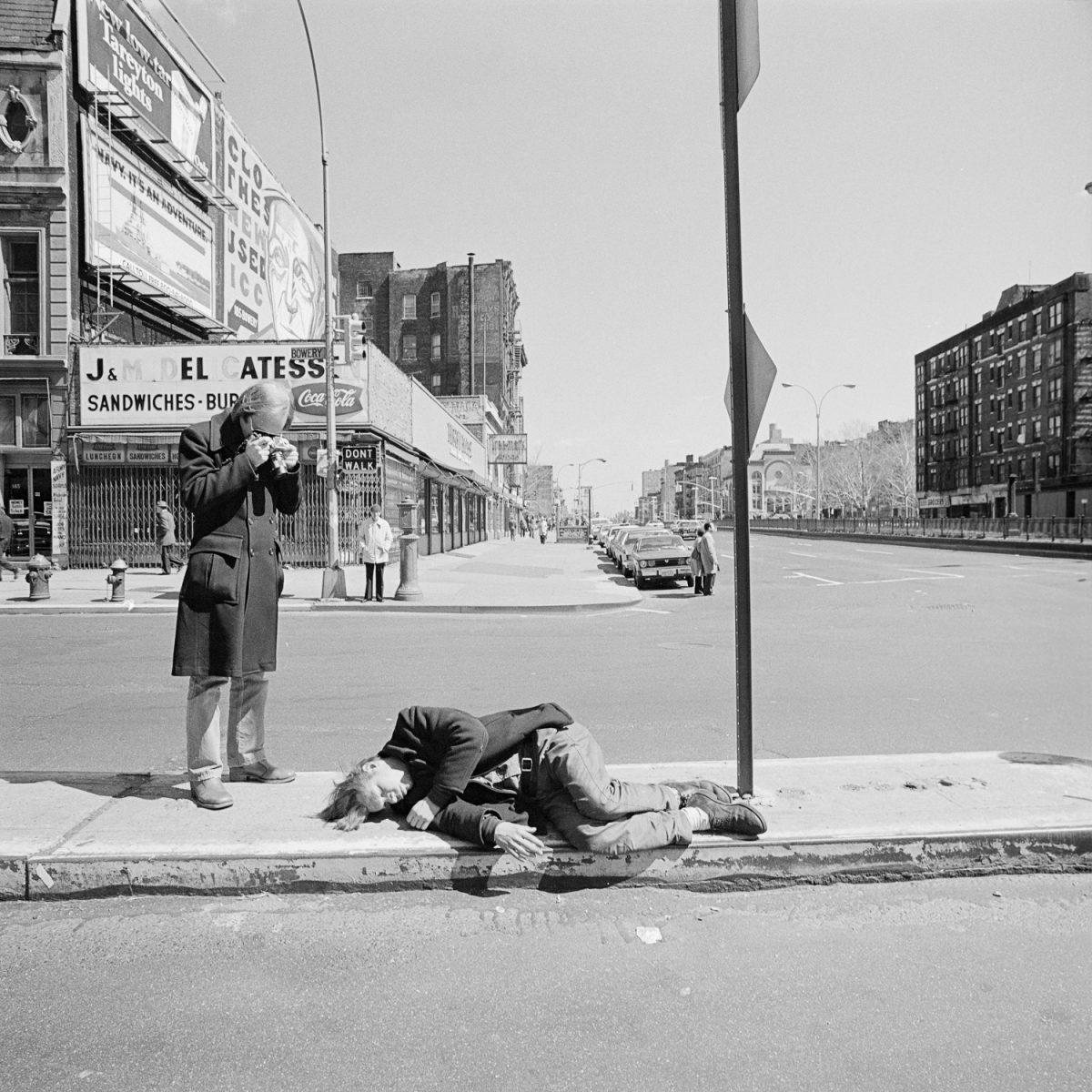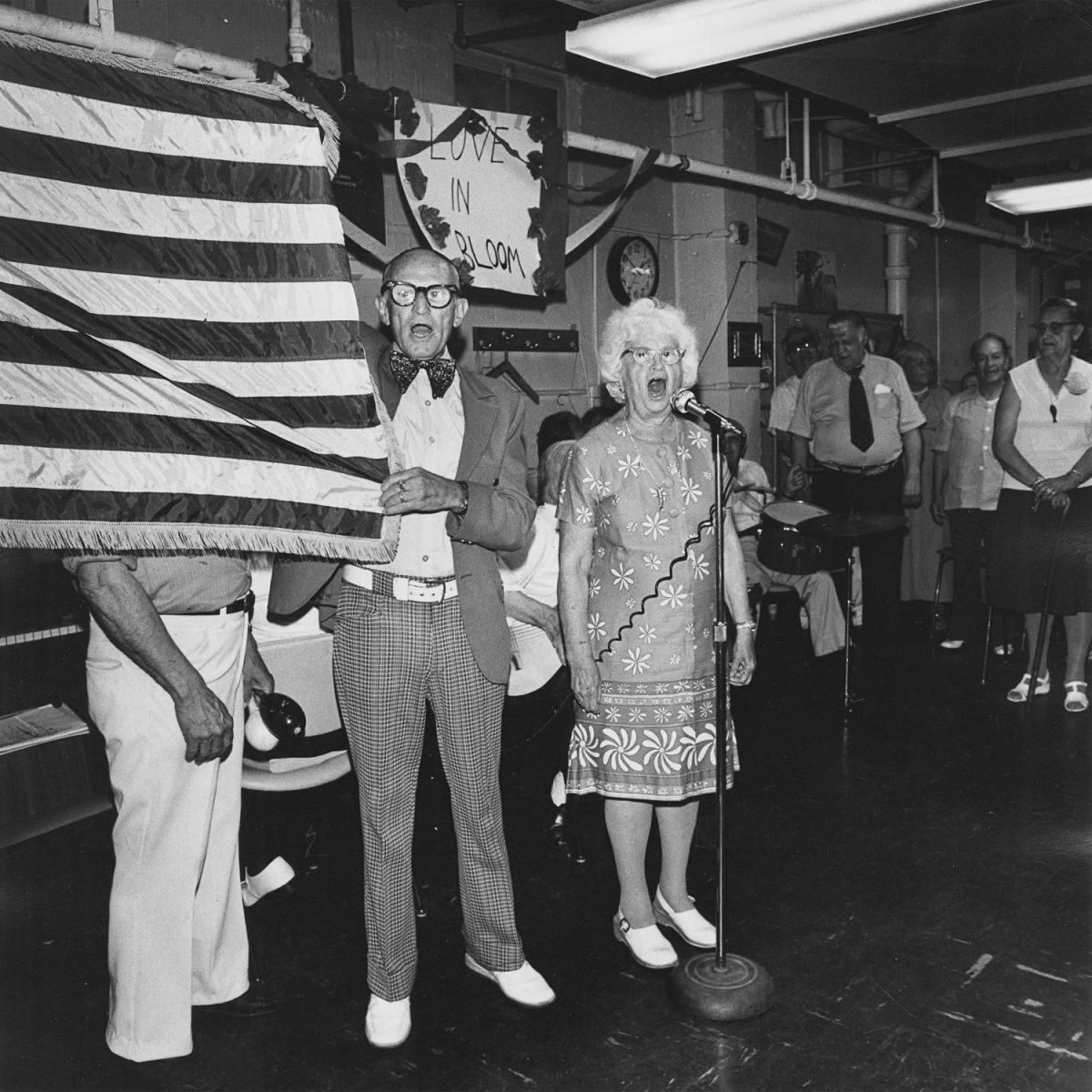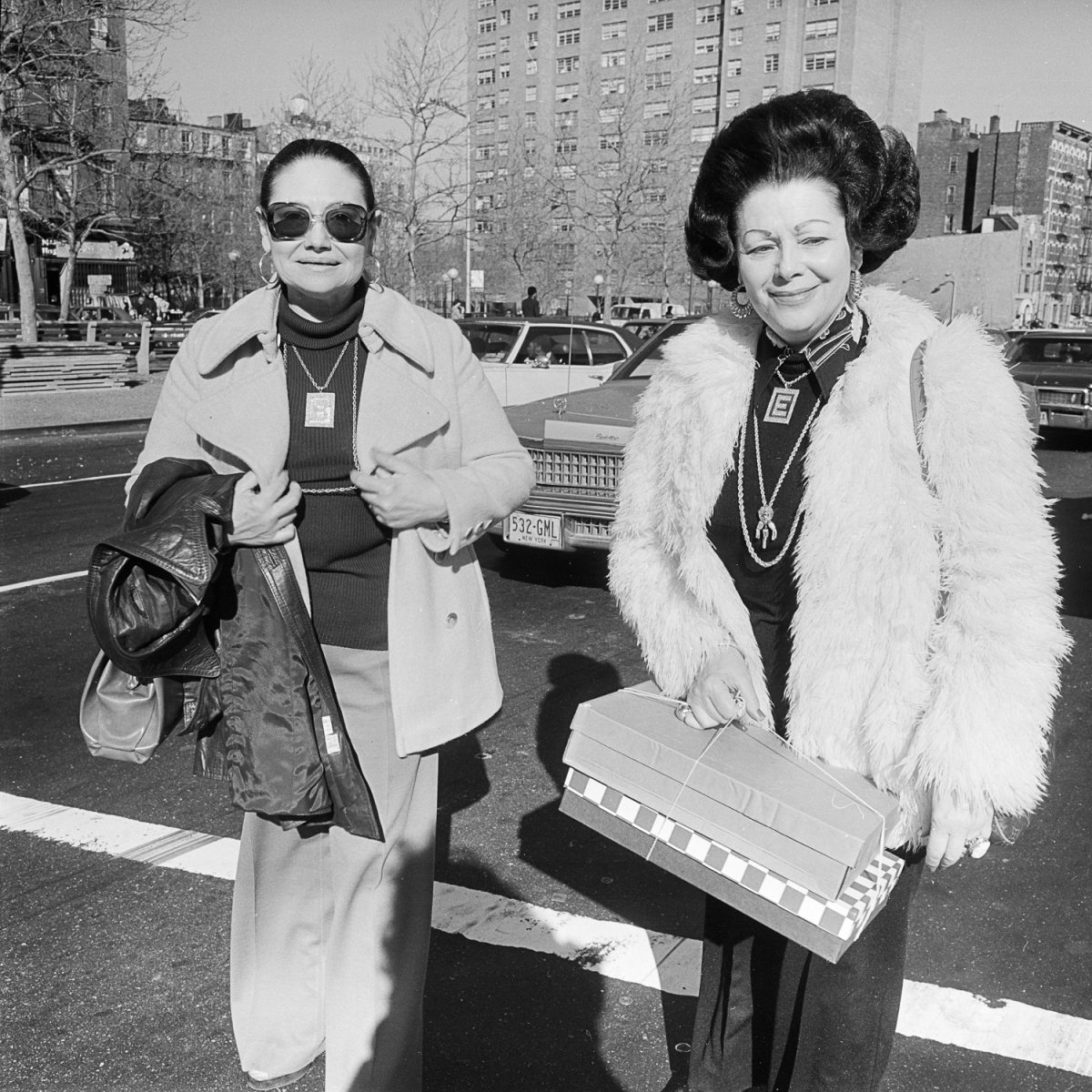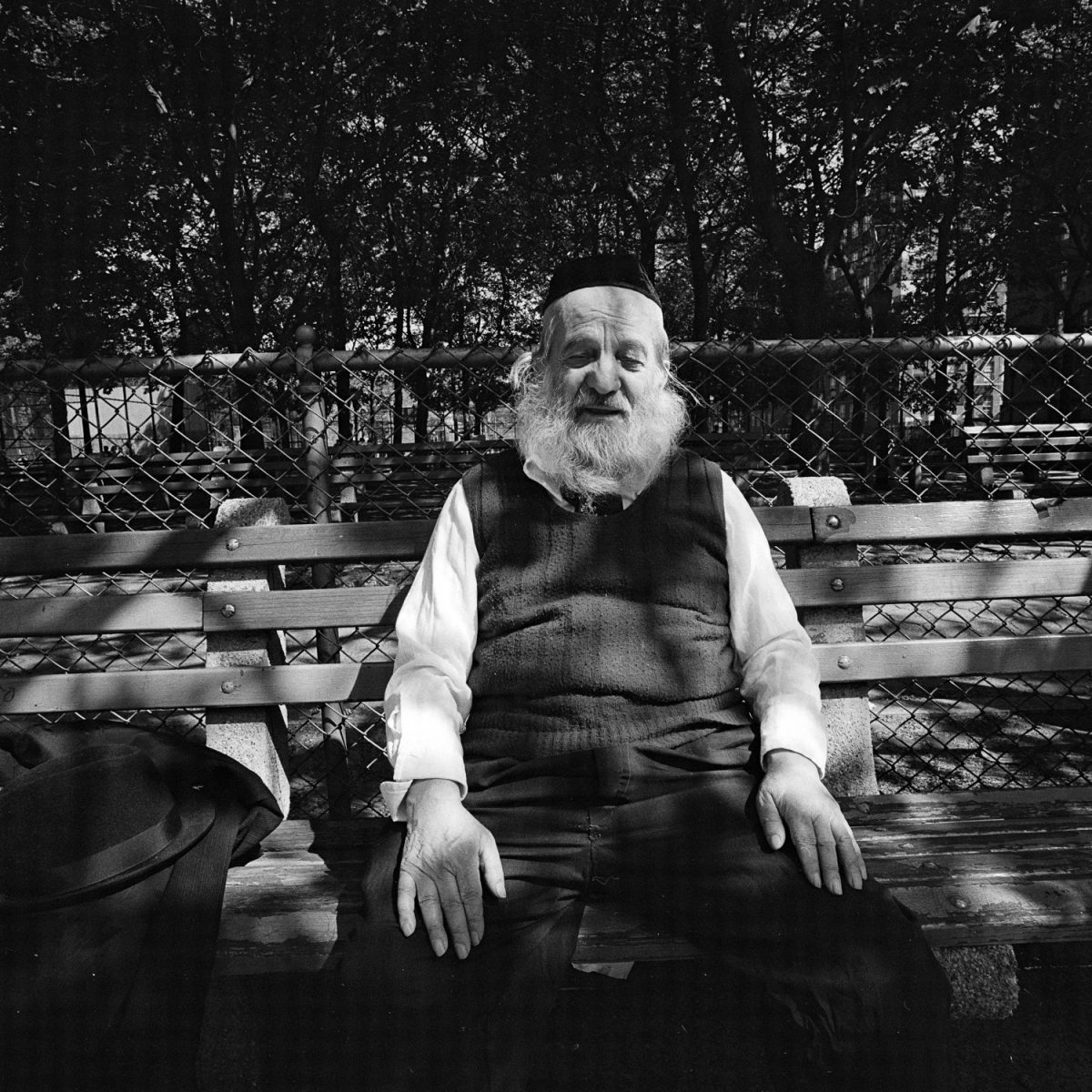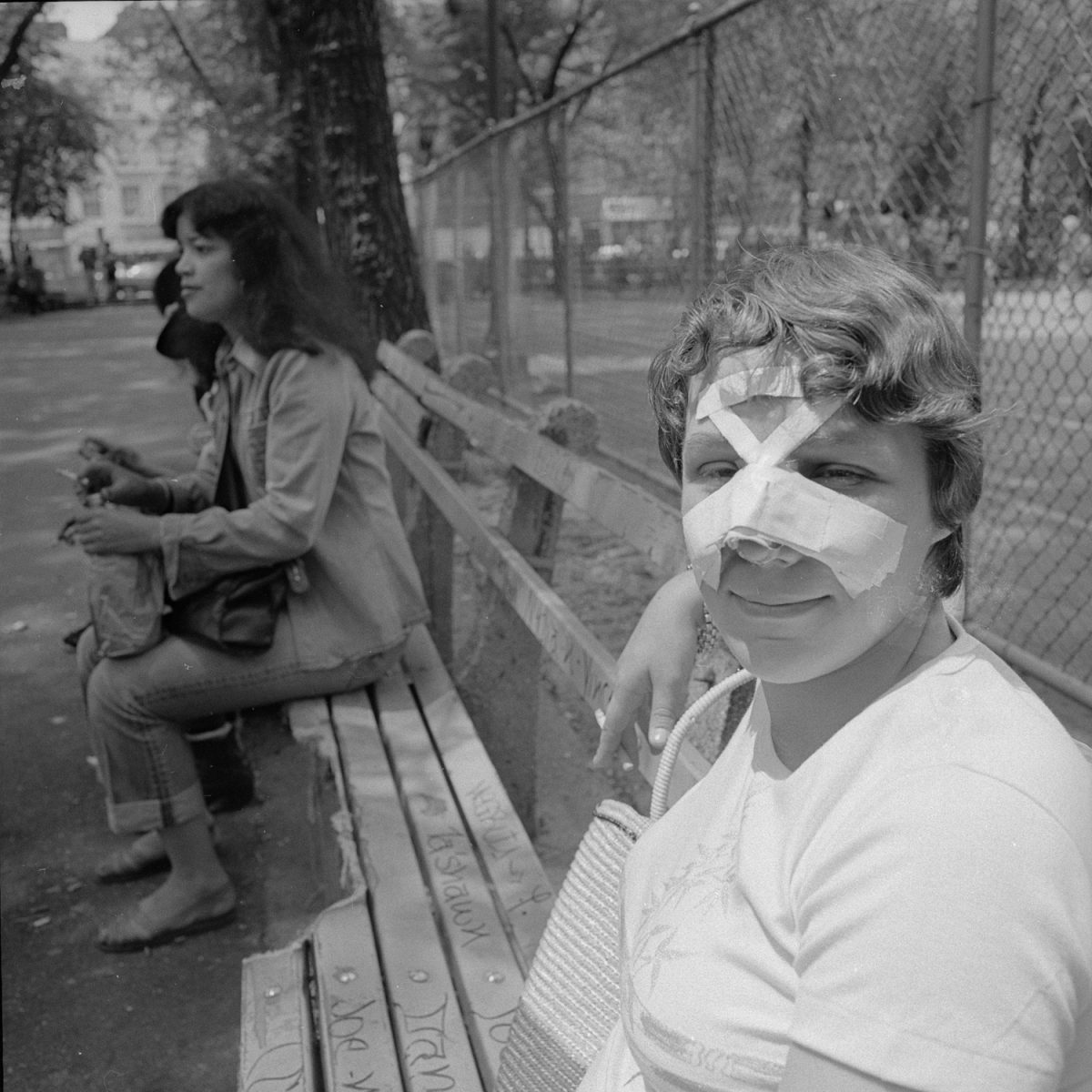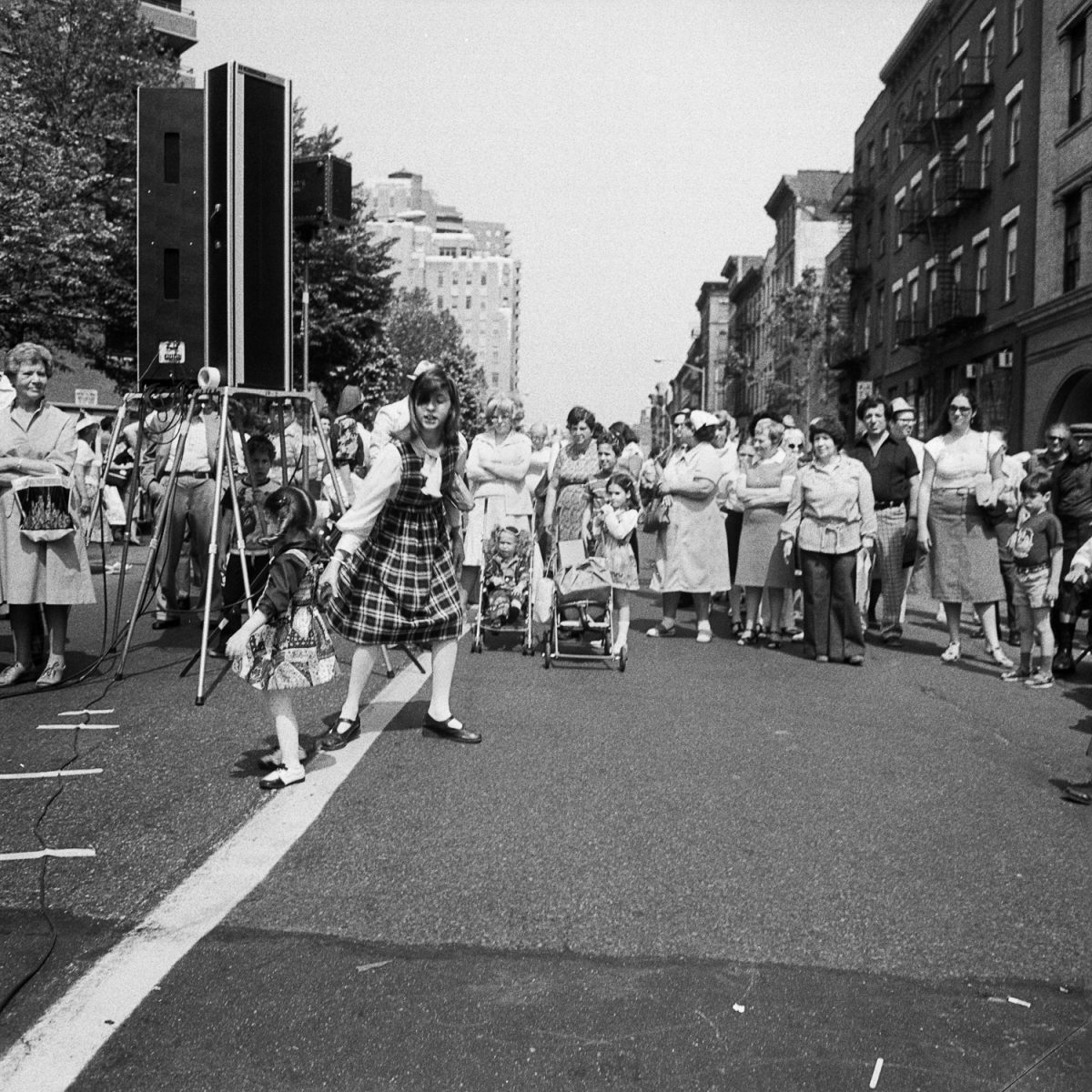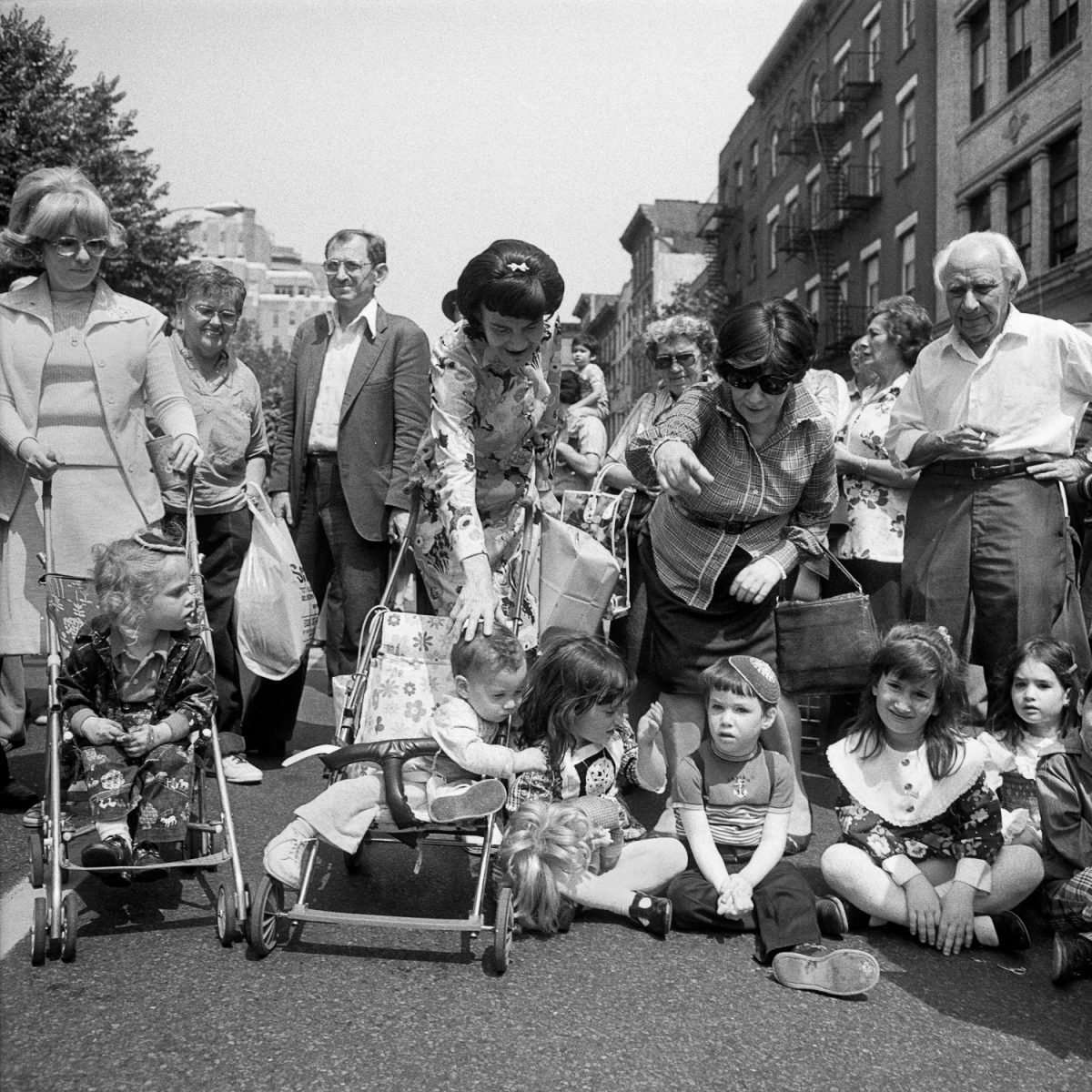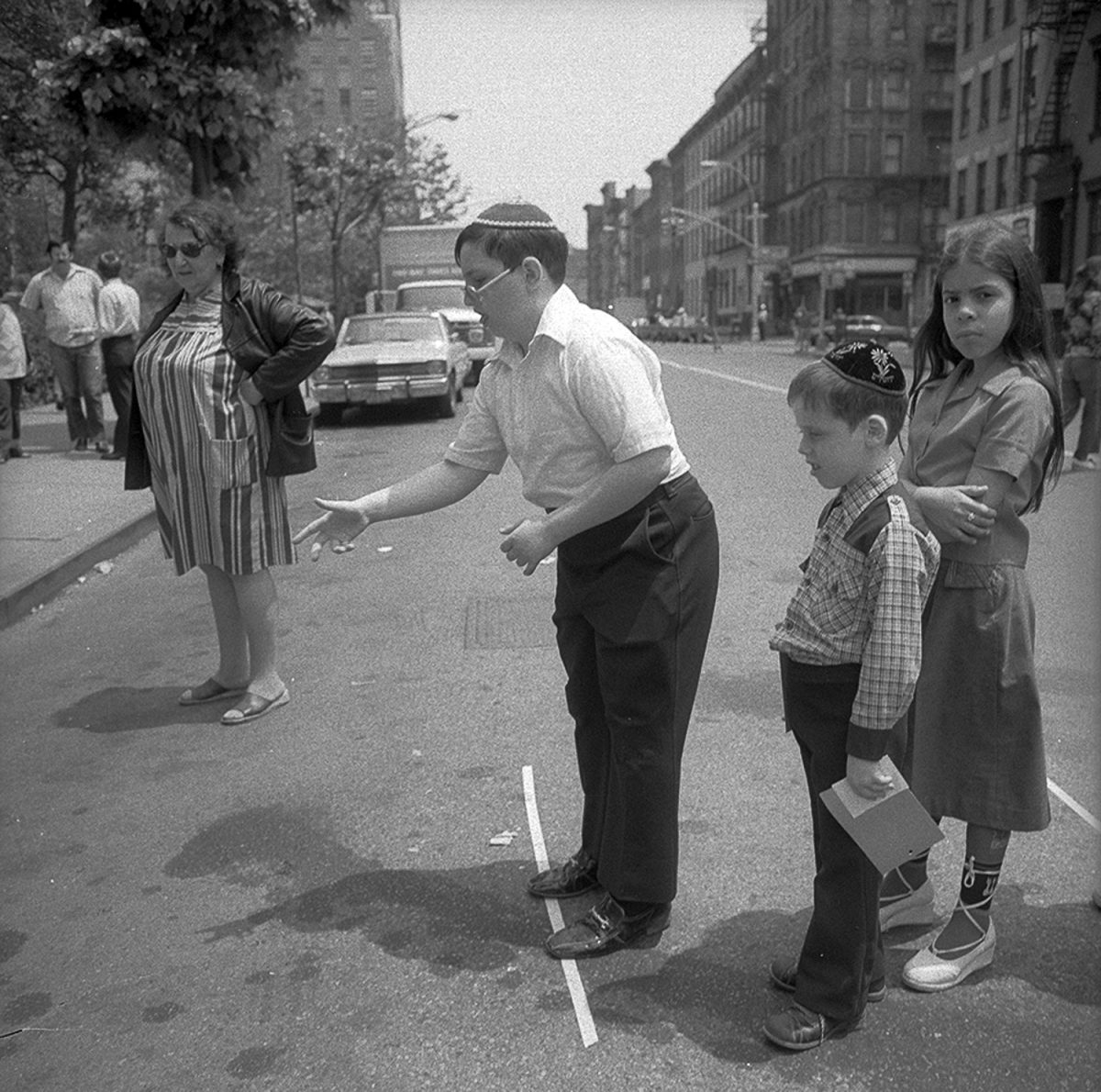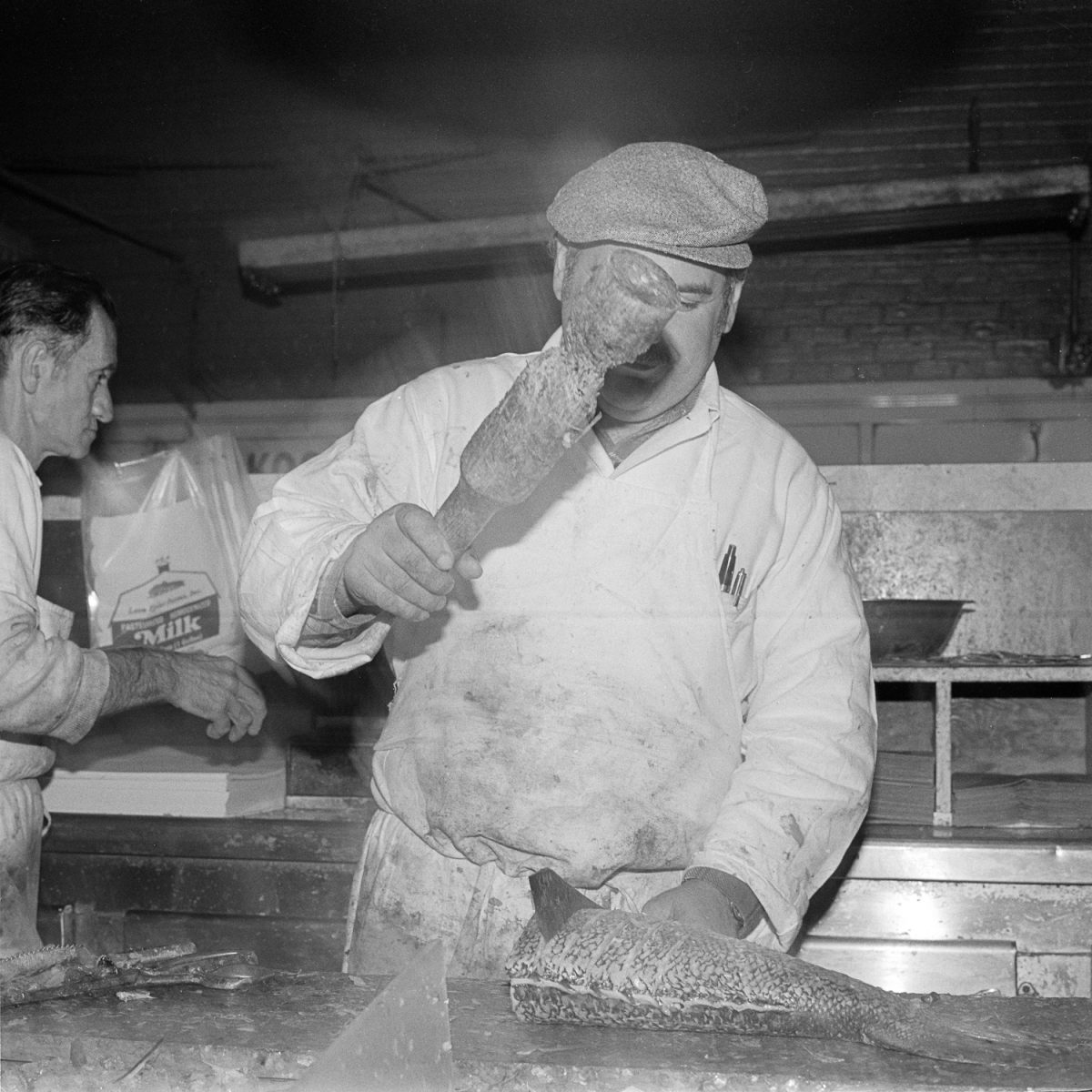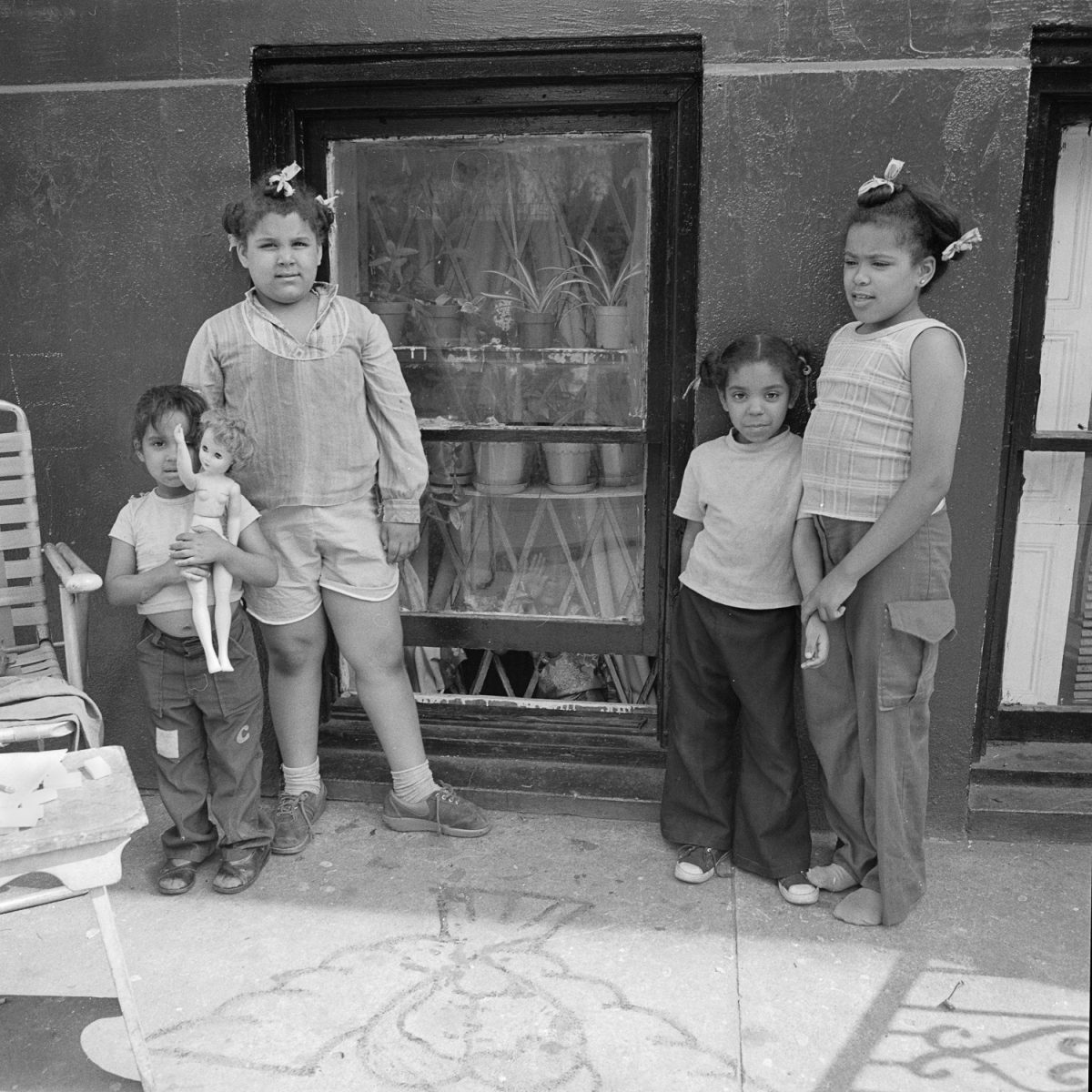Photographs of New York City’s Lower East Side in the 1970s.
Meryl Meisler’s photographs of New York City’s Lower East Side in the 1970s show us the tight knit immigrant and working-class neighborhood during difficult times in the city’s history. No place is more New York than on the city’s street, where the familiar becomes strange. In the 1970, New York’s stressed-out menace and anger seeped up from The Subway and down from the rattling fire escapes and open windows. Anxiety shadowed mugging and rape as NYC calling cards, tokens of your trip. ‘Have a nice day.’ ‘Don’t jog. Run!’ The message distributed to visitors arriving at New York City’s airports in June 1975 advised: “Welcome to Fear City…Until things change, stay away from New York City if you possibly can.”
So much for the PR. What of the reality? It wasn’t all dystopian. Far from it. Life in the mega shtetl was full of hope and light.
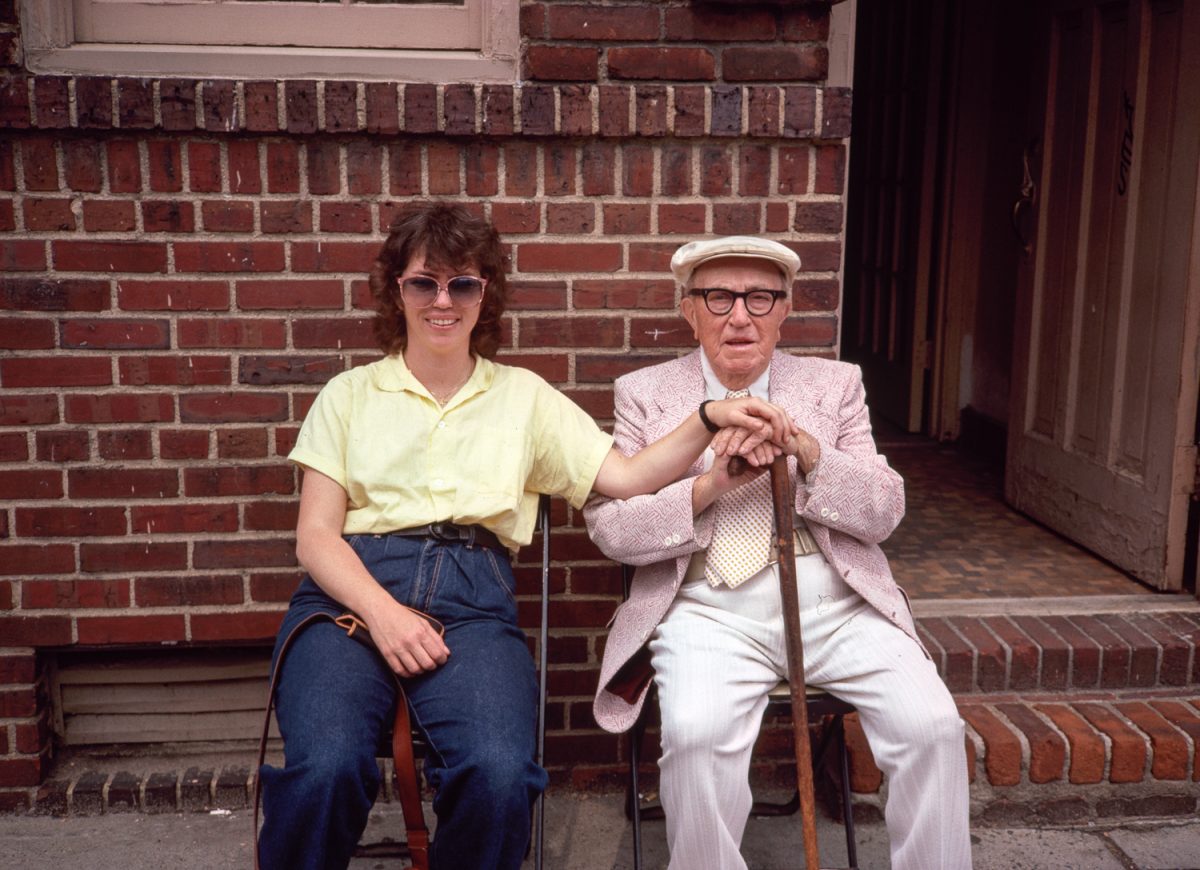
Mr Katz and Meryl Meisler sitting outside his appartment house on the Lower East Side, New York City – May 1977
In the spring of 1976 while walking to an art event at the Henry Street Settlement on Grand Street in the Lower east Side, Meryl saw a jovial elderly man wearing plaid pants and sports jacket, zebra patterned shirt, a bow tie and yarmulke greeting people and handing out lollipops. He offered Meryl a lollipop and introduced himself as Mr. Morris Katz, the Mayor of Grand Street. Mr. Katz said he lived a few doors down the block, his apartment was like a museum and invited her to see it. Meryl accepted the invitation on the spot. Mr. Katz showed Meryl his treasured dolls, toys and tchotchkes, set the table so they could have a little bite to eat with cold drinks. A friendship was born.
Mr. Katz was a retired widower who spoke with a Yiddish accent. He used to work at Coney Island, guessing weights. The carney was evident in his jokes, mannerisms, and outgoing personality. For a man in his 90s, Mr. Katz’s schedule was very busy. He kept the apartment once shared with his wife and son, cleaning, cooking and shopping for himself. Every day Mr. Katz would get up early and go out making the rounds to the senior centers, synagogues, parks, police station and playgrounds- greeting people, handing out candy and catching up with news of his constituents. Mr. Katz had a social worker; among her other clients was the real “Auntie Mame”. He often took Meryl on his rounds, proudly introducing her to his neighbors. Likewise, Meryl brought her parents and friends to meet Mr. Katz.

Piano Player at Henry Street Settlement Good Companions Senior Center, New York, New York – July 1978
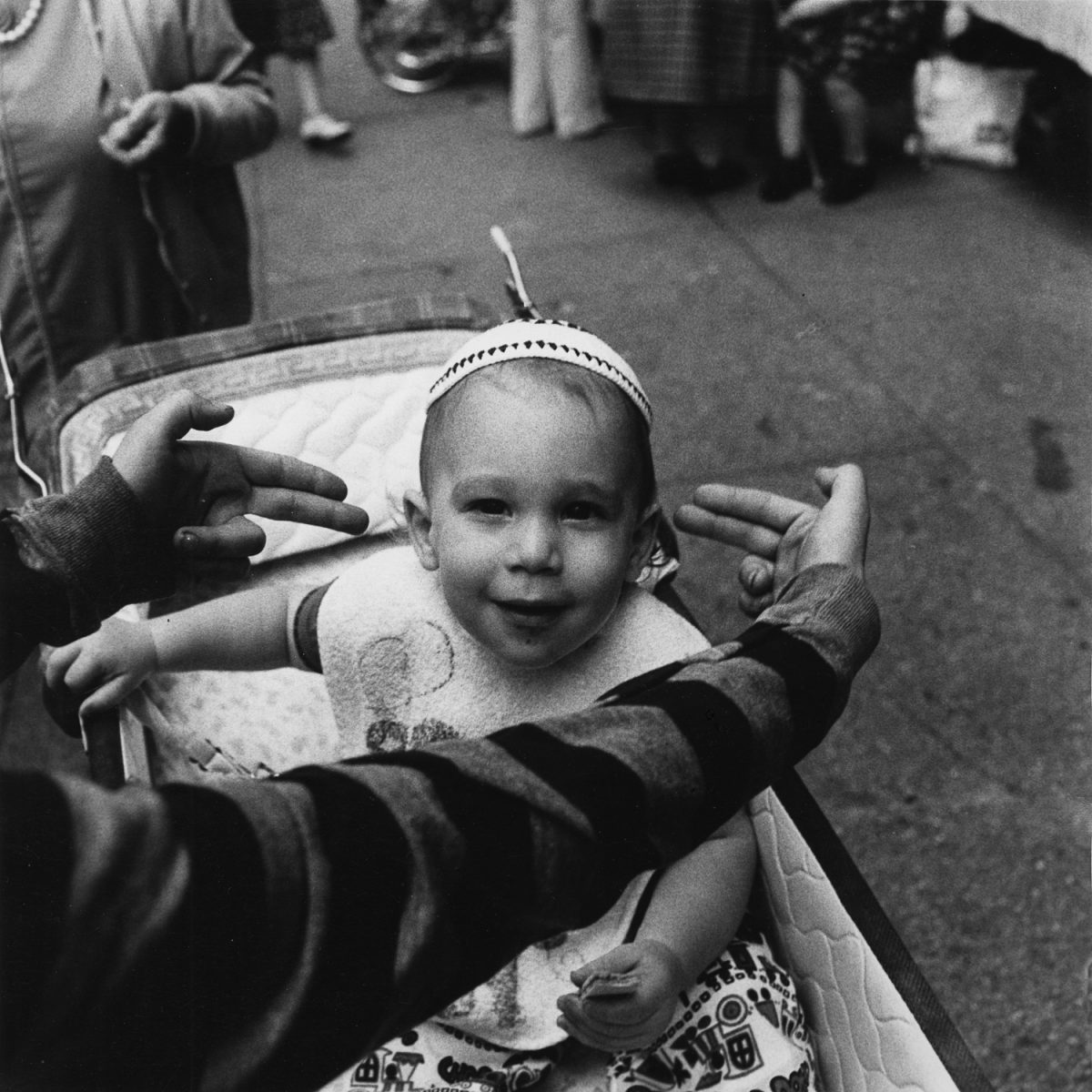
A future Talmudic student being pointed out by my photography student Michael Marsh at The Lower East Side Street Festival – NY, NY June 1978
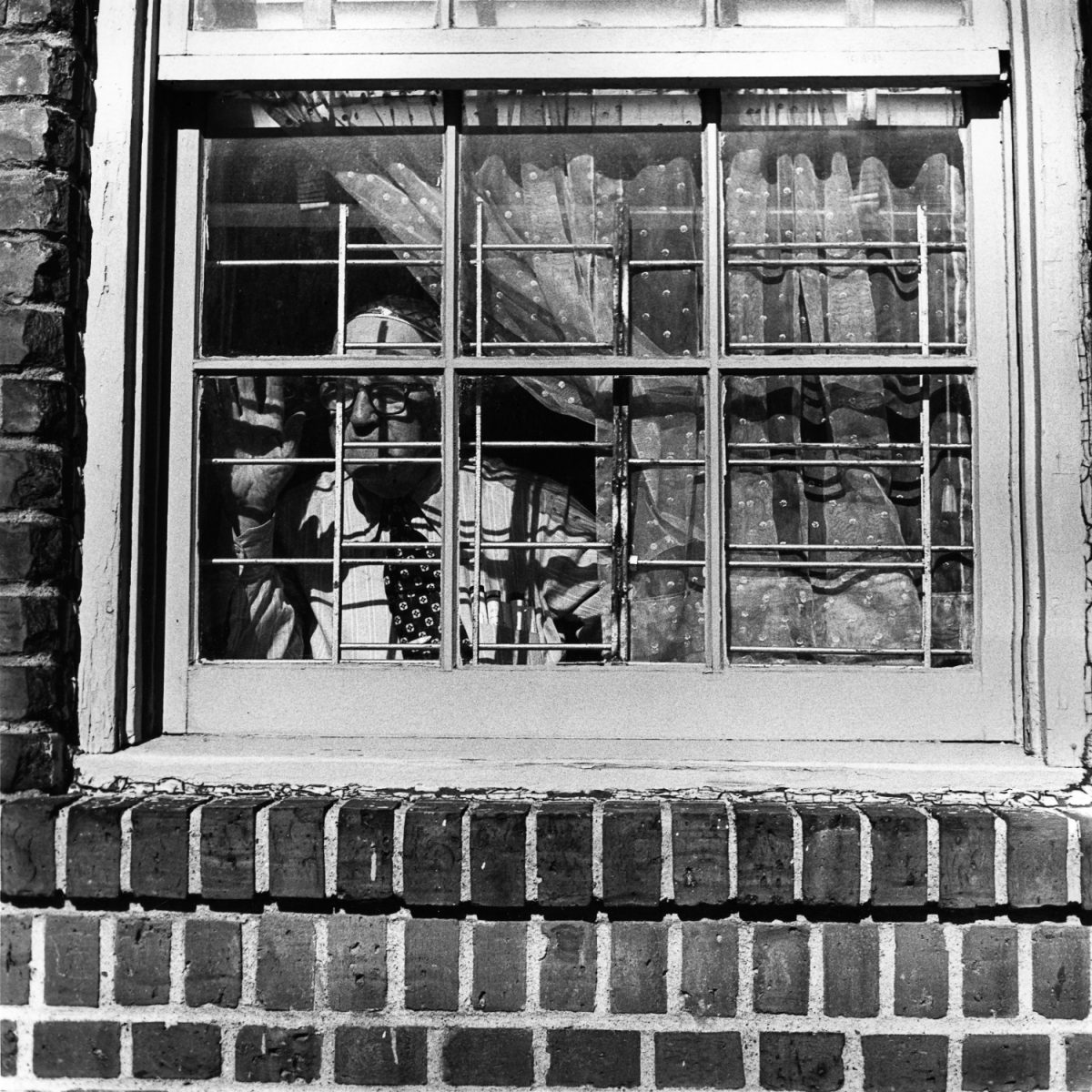
Mr Katz was mugged by two kids who found him dozing in front of his TV in his living room – NY, NY October 1978
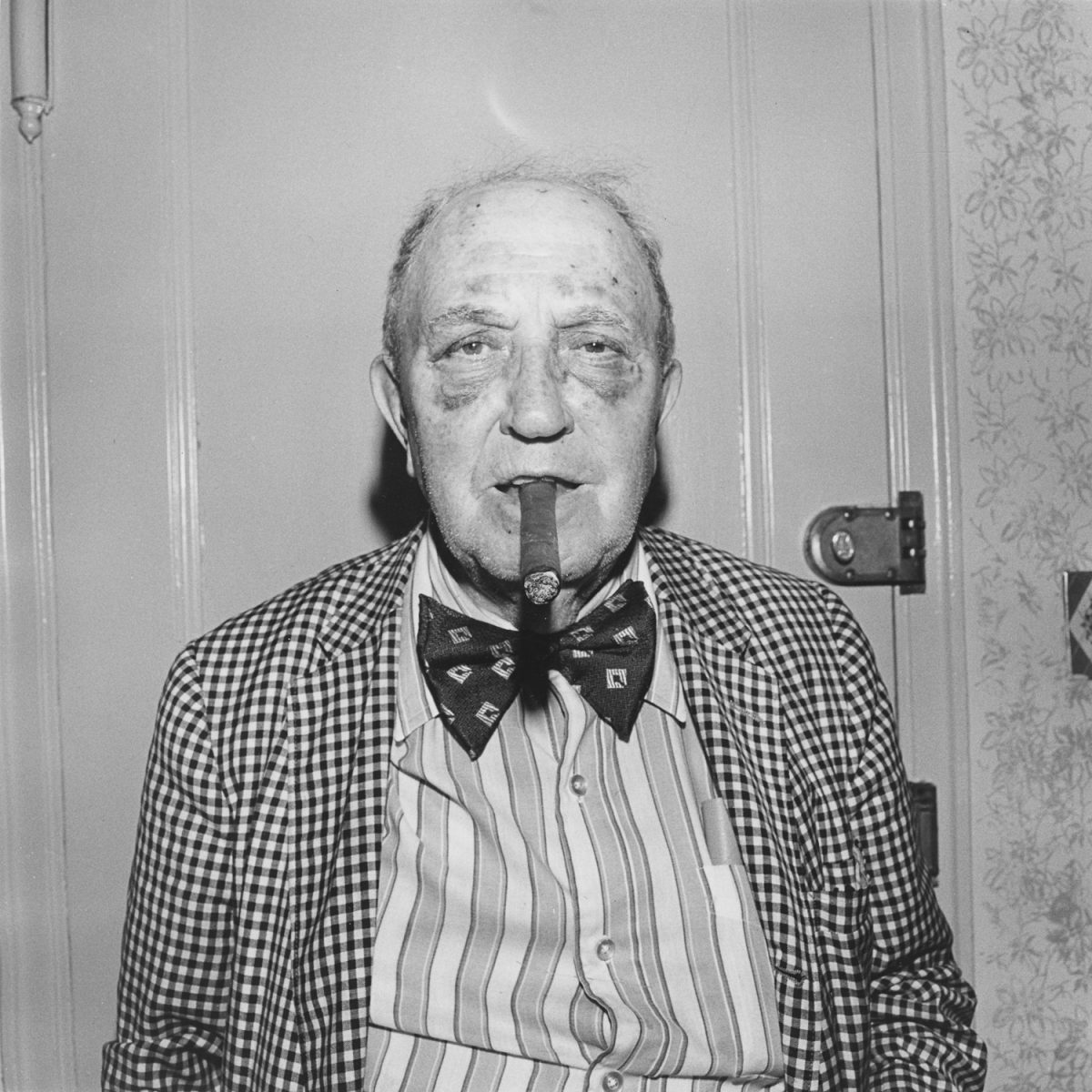
Mr Katz was mugged by two kids who found him dozing in front of his TV in his living room – NY, NY October 1978
There was a brutal heat wave in 1986. After the heat wave broke, Meryl received a phone call. Her step mother shared a story of a 2nd cousin whose father passed away while sitting in his apartment during the heat wave, shortly before his 100th birthday. The name of the man who passed away was Morris Katz.
Through a few degrees of separation, Meryl learned she was related to “The Mayor of Grand Street”.In 2008, The National Trust for Historic Preservation placed the LES on their list of America’s Most Endangered Historic Places. Meryl asks the viewer to be mindful that these grounds were made holy by the sweat, tears, and love of those who came before us, in a time not so long ago. Think about what each of us is doing to learn from, preserve and contribute to history.
What we will give to future generations? What will they say about us?
We love Meryl’s work. Here terrific and soulful photographs of partying at NYC clubs, her Long Island family and surviving the thrill of disco-era Bushwick do the vibrant, energetic, go-to city of her birth a service.
Catch Meryl Meisler’s Photographs of The Lower East Side During the 1970s & ’80s this May 03 – June 03, 2018 at The Storefront Project, 70 Orchard Street, NY, NY.
Meryl Meisler is author of two internationally acclaimed photography books A Tale of Two Cities Disco Era Bushwick (Bizarre Publishing 2014) and Purgatory & Paradise SASSY ’70s Suburbia & The City. All pictures copyright Meryl Meisler courtesy of The Storefront Project & Steven Kasher Gallery.
And look out for the show BIZARRE Assorted Madness & The Unexpected, photographs by Meryl ,Gregory Baubeau and Jean–Stéphane Sauvaire at BIZARRE Black Box Gallery in Bushwick.
Would you like to support Flashbak?
Please consider making a donation to our site. We don't want to rely on ads to bring you the best of visual culture. You can also support us by signing up to our Mailing List. And you can also follow us on Facebook, Instagram and Twitter. For great art and culture delivered to your door, visit our shop.
